An Overview of Patent Due Diligence
Patent Due Diligence is the process of examining a Patent or set of Patents to aid your business or company objectives. Patent Due Diligence can take many ways or forms, depending upon the conditions in which the requirement for Diligence arises. For instance, Diligence can be offensive to find out whether others are violating your Patents or whether your Patents can be monetised through licensing or divestment. Such offensive Diligence may require researching other companies’ products to determine whether any of their products violate your Patents as a 1st step towards enforcing your Patents. Moreover, it may comprise tailoring a licensing strategy to make revenue in line with your business objectives.
Patent Due Diligence can also be defensive about assessing whether you have the freedom to function in your next business endeavour, comprising whether you are violating the Patents of others and what steps must be taken to lessen that risk. Whether engaging in defensive or offensive Diligence, companies often rely on qualified IP Counsel to examine Patents and determine how they may factor into business objectives because of the legal expertise required to assess factors like the validity & ambit of a Patent and create a monetisation strategy to maximise the return on your IP investments.
What does the process of Patent Due Diligence Require?
The scope & depth of the Patent Due Diligence analysis can vary considerably based on your requirements. Following are some factors required for the Patent Due Diligence process:
- Find Out whether the Patent is valid or/and Enforceable: This examination evaluates one or more factors regarding the Patent validity, such as whether the Patent claims are unique over the Prior Art, Whether the Patent adequately describes the invention and whether the Patent claims are directed to patentable subject matter or a Patent ineligible nonfigurative idea. This analysis may also comprise estimating any challenges to Patent validity that were brought by a 3rd party in an earlier Patent proceeding or litigation.
- Find out whether a proposed product falls within the ambit of Patent Claims: This analysis may comprise a review of Patent file specifications, claims, and records, an assessment of how certain claim terms could or should be taken in a Patent proceeding, and an application of the Patent Claim to a target product to a proposed product. The outcomes of this analysis are generally used to find out the Patent Infringement risk linked with a present or planned business activity.
- Find out whether there are capable ownership, chain title or maintenance fee problems: This examination comprises assessing the ownership or proprietorship, a chain of title, and early expiration processes. Initially, Patent ownership vests in the named inventors and can progress through Patent Assignment Agreements to others. Defects in the title chain may considerably devalue the Patent and make it more complex to assert in litigation. Also, usually speaking & subject to definite exceptions. A Patent will expire about twenty years after the initial application for the Patent was filed with the Patent Office. Fees for Patent maintenance are due to the Patent Office periodically over the course of the lifespan of a Patent, and if those are not timely paid, a Patent can expire or expire earlier.
What are the Uses of Patent Due Diligence?
Any time during a Patient's lifespan, Due Diligence can be conducted, depending on the purpose of the Due Diligence review. Following are uses of Patent Due Diligence:
- Receiving a Cease & Desist Letter or Notice Letter: Receiving this letter on Infringement, the first thing you must do is to collect information. Due Diligence would be crucial to you & your attorney in finding out whether the allegation has merit and for forming strategies. This would be the most time-responsive condition, as Cease & Desist Letter specify a time period for you to stop the Infringement.
- Before Filing an Application for Patent: At this stage, Due Diligence Reviews are used to examine & search prior art references prior to filing an application for Patent registration, sometimes as early as before the original design of innovation.
- Transactions: Due Diligence is mandatory for any Patent-related transactions, whether it be for monetisation (licensing, Acquisition, pledging, etc.). Merger and Acquisition raising external investment capital, or preparing for an IPO (Initial Public Offering) Transaction regarding Due Diligence is an irresistible & intimidating task that comprises people from different areas of expertise and more time & money.
Patent Due Diligence Review Process
The Due Diligence review process is like any other examination process, and it includes four different stages. However, the problems & products addressed in the review may range from answering a few questions, depending on the purpose and intended deepness of the review. The process of Due Diligence review is a fluid process; sometimes, you'll need to backtrack to an earlier stage if anything new or unclear is discovered in stages. Following is the process of Patent Due Diligence:
Step 1: Preparation: Before starting anything, there are some vital things to determine, and these comprise:
- Scope & Cost;
- The purpose of Patent Due Diligence Review;
- Objectives;
- Team of professionals.
Step 2: Collection of Data: One of the primary problems in this step is to collect & examine the following:
- Ownership: Patent ownership is vital as some Patents may be jointly owned and will create problems if the Patent is handled inappropriately.
- History of Litigation: Any history of Patent Litigation needs to be excavated & reviewed to find out hidden litigation problems and prevent future cases.
- The Protection Status of the Subject Matters: After aiming the subject matters in the initial stage, you need to find out the protection scope.
- Other Documents: Patent related documents to be gathered for further examination comprise Confidentiality Agreements, Licensing Agreements, Employee Assignment Agreements, Publications, and any internal correspondence.
Step 3: Examination: This step is the most time take and boring in the process of Due Diligence. In this step, you have to:
- Examine the Patents: You will need to examine the status, validity, scope of the claims, and uniqueness of every Patent. You may want to draft a separate Due Diligence checklist for this matter to ensure you examine the same products in each Patent.
- FTO Search: If you are preparing to get a Patent Portfolio for a new business, then an FTO Search would be vital to ensure the Patents-at-issue permit for such development or improvement.
- Pin-Point Issues: Perhaps, you have found that a definite target that should be patented was not filed. Or maybe found another Patent family that requires further examination. Or an actual Patent has outstanding maintenance fees.
- Draft Action Items: Action items may comprise asking the Patent holder to pay outstanding maintenance fees or giving extra information. Or perhaps by now, your team determines that the view deal requires re-examination or your business plan needs to be adjusted.
Step 4: Report: The final step Due Diligence process would be to write the report. Although the format or form may vary for each review, we recommend that you use your actual process checklist as the outline in writing a Due Diligence Report. The components in a Due Diligence Report include:
- Findings, charts, analysis, interpretations, statistics;
- Objectives & Background;
- A Strengths, Weakness, Opportunities, and Threats (SWOT) Analysis.
What is the Challenge Faced in Due Diligence?
Patent Due Diligence is a time taken and tedious process. The landslide of information is sufficient to cover any Patent Professional/expert. A Patent Portfolio may reach thousands of Patents in a single transaction. For example, in 2012, the Apple Consortium sold around 4000 Patents to RPX, and in the year 2016, Microsoft sold 1500 Patents to Xiaomi. You can imagine that how many people have to examine and go through all the Patents for each case.
All this means is that a detailed look at the overall Patent Portfolio would be impossible and the best could be helped for was a report based on the Patents that could be analysed, comprising only basic details like the Patent owner & status.
For a better Due Diligence process, the following are some vital points:
- Hidden Problems: There may be pertinent Patents or Prior Art that was not actually found or provided that may have underlying issues or problems. Hidden problems are generally found after careful examination of an overall Patent.
- A Quick and Standard Assessment of the Condition: You’ll need to understand the scope (number of related Patents, file wrappers, Prior Art), the entire strength of the portfolio, related technologies, etc. quickly initially.
- The Central Points: You will need to find the central point quickly by analysing the key Patents for examining possible problems like Patents with joint ownership or Patents that were litigated.
Frequently Asked Questions
Patent Due Diligence is the process of examining a Patent or set of Patents to aid your business or company objectives.
The primary purpose of Due Diligence, which is generally carried out by the capable buyer, is for the buyer to examine and obtain enough details of the target asset, company or business to form an outlook on those matters before committing to the purchase.
You should always execute Due Diligence with the help of your accountant, business adviser, or lawyer.
Due Diligence checklist is an arranged way to the examiner a company that you are obtaining through merger, sale or any other method.
FTO stands for Freedom to Operate search gives confidence to the Patentee or its Licensee that they can commercialise the patented invention.


